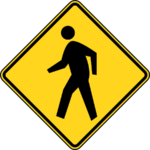
To the Editor: I am looking at the September/October BCF Newsletter article, “Town Works to Make Streets Safer for All,” with plans for the roundabouts on Concord Avenue at Winter and Mill Streets. I favor roundabouts for the sake of traffic safety, and so I am in favor of most of the project. The drawings, however, show a bikeway along the southwest side of Concord Avenue, narrow at the ends and widening as it passes two roundabouts, where there are crosswalks, and ending on Mill Street. The bikeway serves only eastbound bicycle traffic. A sidewalk is shown on the northeast [READ MORE]

















